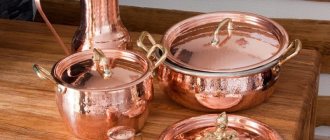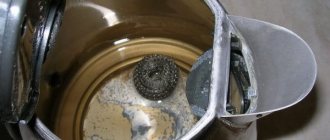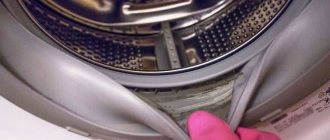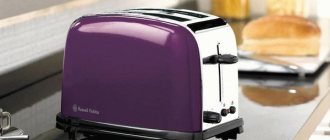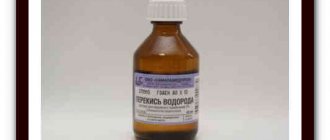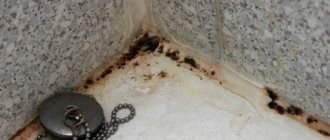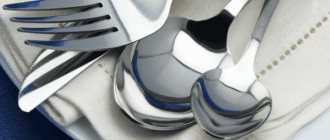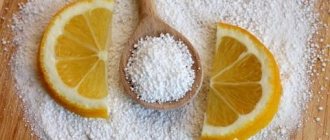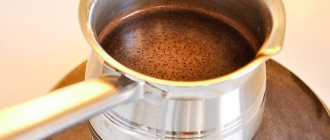Types of pollution
Over time, a persistent coating from your favorite drink or even mold appears on your brand new thermos. This is not pleasing to the eye and is harmful to health. Why is this happening?
Tea and coffee stains
A cup of hot drink pleasantly warms you up in the cold. But with constant use of the thermos, an unpleasant brown film appears inside. It is formed due to caffeine and essential oils.
Scale
Hard water and insufficient care lead to limescale deposits inside the thermos. It may contain deposits of chlorine, heavy metals, bacteria, so it is better to clean it.
Mold (fungus)
Sometimes when dishes are stored closed for a long time, mold develops. Fungus appears especially often when a thermos is still damp.
Mold has an unpleasant appearance and smell and spoils the taste of drinks and food. It can cause an allergic reaction and poisoning, so you need to get rid of it.
Cleaning methods
There are quite a lot of them. There are special preparations that can be used to clean a thermos. But you can also use improvised means that are convenient for washing thermal dishes at home.
Baking soda
It will easily clean the flask from scale and deposits, and at the same time disinfect it. A proven, inexpensive product that even copes with mold.
Add soda to hot water. Pour 1 tsp, 3 tbsp. l. or even more: it all depends on the degree of pollution. We stand for 6–8 hours. Then rinse the thermos.
Salt
Removes plaque, stains, plus removes odor. You will need 8 tbsp. l. salt per 1 liter of hot water. Some people make a more concentrated saline solution. The saline solution is left for 6–8 hours, after which the product is washed.
Mustard powder
The recipe is simple: 2–5 tbsp. l. The powder is mixed in a bowl with hot water, closed, shaken and left for 4-8 hours, washed.
Lemon, citric acid
Effectively clean the flask from brewing and coffee deposits. Citrus is cut into slices, placed in a bowl and poured with boiling water. Wait a few hours and wash the thermos.
Instead of lemon, you can take 2 tsp. citric acid. In case of heavy contamination, add 2 tbsp. l substances. After 3–8 hours, wash the dishes.
Vinegar
An aqueous solution with food vinegar helps to clean the flask from tea and scale. Take one third of vinegar and two thirds of hot water and pour it into the flask. After 2–6 hours, thoroughly wash the product with dishwashing gel.
If you add a little baking soda to the vinegar, everything will clean up very quickly.
Baking powder or baking powder
They usually contain soda and citric acid, which help remove scale and wash plaque from the inside of the thermos. You need to take 2-3 tbsp. l. or 1-2 sachets of the substance and mix with warm water in a thermal container, leave for 2-3 hours, then rinse the product.
Rice or pearl barley
They have cleansing properties. It is enough to pour a few tablespoons of rice or pearl barley into a flask and pour boiling water over it. Then close, shake and leave for a couple of hours. It is advisable to shake the thermos 3-4 times per hour. All that remains is to rinse the dishes.
The recipe works even better with the addition of 1-2 tsp. soda
Soda
Successfully fights stains from coffee and tea. They use Pepsi, Fanta, Sprite. Coca-Cola is especially praised.
However, glassware manufacturers do not recommend storing soda in a thermos: due to the large amount of carbon dioxide, the surface of the flask may deteriorate. Therefore, it is not advisable to hold a carbonated drink for longer than 20 minutes.
Do not close the lid so that the stopper does not fly out or the glass flask is damaged.
Another recipe: boil the soda so that the gas comes out, and then pour it into the bowl. Leave for several hours, then wash.
Ammonia solution
Long-term exposure of a steel flask to ammonia will damage it. Plus, the ammonia solution will corrode rubber gaskets and leave an unpleasant odor.
But you can occasionally wipe the flask with ammonia, or use an aqueous solution. To prepare the solution, add 5–10 drops of the substance to each liter of liquid, stir and leave in the flask for a short time. After cleaning, wash the dishes thoroughly.
Medical alcohol
Fill the flask one-third full with alcohol. Add warm water. Close and shake well. Leave for 45–60 minutes. Afterwards we rinse.
The recipe can be used no more than 3-4 times a year so as not to spoil the flask.
Dish gel, laundry soap
A simple but effective solution. The products remove greasy stains well and fight mold and plaque.
Dishwasher detergent
Special tablets and gel are potent agents. They will cope with black stains from drinks and fungus. After cleaning the dishes, wash them with dish gel and pour boiling water over them several times.
Before use, read the instructions and make sure that the selected product is suitable for your dishes.
Tooth powder or paste
Suitable for cleaning stainless steel flasks. Wipe it with a soft sponge or cloth. Afterwards, rinse with water.
Tablet "Korega"
Denture cleaning tablets are great for cleaning the inside of a thermos. They remove even stubborn stains from drinks or lime.
Use warm water: it should not be too hot. You will need 1-2 tablets, and more if it is heavily soiled. Let the solution sit in the container for 6–8 hours, then rinse.
Do not pour water to the very top of the flask so that the resulting foam does not run out over the edge. Or carry out the procedure in the sink.
Hydrogen peroxide with soda
Take 100 g of soda and use peroxide to make a paste. Gently wipe the flask with it, leave it to stand for a while and rinse off.
Special anti-scale and plaque products
To clean stainless steel utensils, specially designed products are used:
- "Silit";
- "Antiscale";
- "The Shine of Steel";
- "Dafor."
They clean the flask well from plaque and mold. Any drug of your choice is poured with boiling water and left in a thermos for an average of 1 hour. Then they wash the dishes.
Methods for cleaning a thermos from plaque
There are many methods to get rid of tea stains. The ones described below are considered the most effective.
Lemon acid
You can clean the thermos from tea deposits inside using this inexpensive product, which can be purchased at any grocery store. Based on the volume of the container, pour 1-2 teaspoons of citric acid into a vessel with boiling water, close it with a lid and leave for a day. It will not only clean the flask of light contaminants, but also remove unpleasant odors.
If you don't have citric acid on hand, use fresh lemon. Cut it into slices, add to the container and pour boiling water over it. You need to let it sit for a day, and then wash the thermos as usual.
Soda
You can wash the inside of the thermos with baking soda. You will need 1 tablespoon per 200 ml. water. Pour the solution into the container and leave for 10-12 hours.
Vinegar
Vinegar will help clear the flask of tea deposits. Add 1 teaspoon of table vinegar to 200 ml. water. Leave the thermos to brew for 2-3 hours. Since vinegar has a strong odor, rinse the container with dishwashing gel and leave it open until completely dry.
Mustard
Mustard powder perfectly removes plaque. Cleaning a thermos with this magical product is very simple: mix a packet of mustard with warm water and leave it overnight.
Salt
This product is more suitable for removing unpleasant odors than tea stains. Pour the brine solution into the container and close the lid for several hours.
Baking powder for the dough
Since the baking powder for dough contains citric acid and soda, this product also copes with removing plaque. Mix the powder with water and leave for 2 hours.
Coca-Cola
Children's favorite lemonade has long been famous for its capabilities. It is not only consumed as food, but also used to clean bathtubs, toilets and other dirty surfaces. So in our case, Coca-Cola, heated to a boil, will also help get rid of tea stains. Overnight it will clean the container of dirt and remove all odors.
Tablets for dentures
A product that has recently appeared in the arsenal of housewives, but has already become popular for its effectiveness and low price - tablets for dentures. You can buy them at the pharmacy. Just add 3 tablets to a thermos with water, close the lid and leave for 8-10 hours. In the morning, drain the solution and rinse the vessel with dishwashing liquid. You can remove both tea stains and odors.
White
White (sodium hypochlorite) can instantly remove black deposits and unpleasant odors, but it must be used extremely carefully. Even a small amount will render the thermos unusable because it will corrode the seams of the flask and the rubber bands that are used in the lid of the thermos. In addition, the composition contains aggressive components that can harm your health.
If the glass flask is very dirty and has a bad smell, then dilute a little white with water. Dip a sponge into the solution and clean the container. Afterwards, rinse the thermos under pressure with water and dishwashing gel. Leave the open container until completely dry. Be sure to carry out the procedure with gloves so that your hands are not harmed.
Rice cereal
An amazing product that will remove the black film in one or two seconds is rice. Pour 2 tablespoons of rice into the flask, add a little soda and fill with water. Leave the contents for 40-60 minutes, closing the lid, and then shake the thermos. Rice will clean everything like a sponge.
Ammonia
Another aggressive remedy that you need to be very careful with is ammonia. It has a pungent odor and, if in prolonged contact with a stainless steel flask, can corrode it. Ammonia with the addition of chalk is suitable for cleaning a glass vessel. Apply the product to a cloth or sponge and wipe the inside of the thermos. Do this quickly and do not soak the mixture under any circumstances.
What not to use
To avoid damaging the thermos flask, do not use rough cleaning methods that will leave scratches or damage the inner surface. After all, damage renders thermal cookware unusable. Here's what you can't clean:
- iron scourers for dishes;
- hard brushes;
- abrasive detergents;
- sand;
- crushed eggshells;
- aggressive chemistry.
What will suit? A soft brush, sponge, cloth, delicate detergents - special and improvised.
The nuances of washing different parts of a thermos
After each use, you must immediately wash the thermos. Moreover, you need to wash it correctly, that is, all its parts - the flask, the lid, the stopper. Then you must definitely dry all the parts, and only then put them away for storage: this will prevent the appearance of mold.
Flask
When caring for a thermos, you should take into account the characteristics of the material from which the flask is made. Then the dishes will last longer.
Metal, stainless steel
These flasks are durable and hold heat well. But they get scratched easily.
Metal flasks can withstand various types of cleaning, but not harsh abrasives. Here's what will do:
- lemon;
- lemon acid;
- baking soda;
- vinegar;
- baking powder for the dough;
- baking powder;
- rice;
- pearl barley;
- soda;
- "Coca-Cola" (with caution);
- tablets like "Korega".
Glass
Holds heat well, but is fragile. Therefore, when washing, the glass flask should be handled with particular care: in order not to break it, it must be cleaned without unnecessary mechanical effort.
When cleaning, use gentle products:
- lemon;
- lemon acid;
- vinegar (preferably apple);
- carbonated drinks;
- saline solution;
- mustard;
- dishwashing gel.
Teflon coated
Metal flasks with Teflon coating are similar in their characteristics to steel ones. They cannot be cleaned with abrasives or aggressive chemicals. Other washing methods will work.
Lid (regular and with button), plug
These parts of the thermos also require mandatory maintenance. After all, they also accumulate food particles that need to be cleaned.
The push-button cover is washed in the “open” position. Plus they don't close while drying.
After drying, there is no need to seal the lid of the thermos tightly: it is better to store the thermos open or with little air entering the flask. This will prevent mold from forming.
Narrow neck
A thermos with a narrow neck is not always easy to clean from black deposits inside. But there are ways. In fact, it can be cleaned even without a brush.
To begin with, you can fill the flask with hot water to the top and let it stand. Then you can apply the cleaning method described above with citric acid, soda, cereal, mustard. You will have to shake the thermos for a while to mechanically remove any stuck-on food particles or deposits.
Mechanical methods for removing tea plaque
The easiest way to get rid of the brown residue that remains on the walls of the thermos is to scrape it off. This can be done in different ways, but the vast majority of methods threaten to damage the flask. Abrasive particles leave scratches of varying sizes and depths on the walls, the presence of which is fraught with unpleasant consequences:
- In the future, cleaning the thermos will be much more difficult. The coloring components of the tea will eat into the distorted surface more and more each time.
- The service life of the thermos is reduced. The likelihood of a glass bulb cracking increases if there is damage that affects its thickness. In this case, the depth of the scratches is less than 0.5 mm, but this is quite enough for the glass to burst when pouring boiling water.
You should use mechanical methods of plaque removal only if there are no safer alternatives.
Ershik
If possible, you should choose a brush with silicone bristles - it leaves virtually no marks. If you don’t have one like this on your household, a plastic one will do, but before using it for its intended purpose, the hard bristly part should be wrapped in a piece of cotton fabric. This will help minimize the damage that will be caused to the flask.
Before you start cleaning, you need to pour hot water into the thermos and let it sit for about half an hour so that the plaque softens and comes off the walls more easily.
Washcloth
Using a washcloth is difficult because drinking thermoses have a very narrow neck and it is not possible to stick your hand through it. You can easily correct the situation using wooden sushi chopsticks. With proper skill, even a child will be able to clean the flask, deftly wielding a washcloth, which is sandwiched between the sticks on one side.
People who do not know how to use exotic cutlery and do not keep them at home will have to look in the kitchen for a wooden spoon with a long and fairly thin handle. It is with the end of the handle that you need to press the washcloth against the walls and bottom of the thermos.
We recommend: We beat out the carpet correctly: how, where and what is the best way to do it?
Sand
The larger the grains of sand, the more effectively it will be possible to remove plaque. Very fine sand will be absolutely useless.
The procedure should be as follows:
- The sand is heated (but not heated) in a frying pan or in the oven.
- The thermos is filled with hot water, which is drained after a while.
- Sand is poured into the flask to fill approximately half the volume.
- Cover the thermos with a lid and shake vigorously until it is clean.
Eggshell
Ground shells work the same way as sand:
- The shell, which has been removed from boiled eggs, is freed from the inner film and crushed into grains several millimeters in size.
- Then fill the thermos 1/3 with shells and another 1/3 with boiling water.
- Next, you should close the flask with a stopper and a lid, and then imitate the process of churning the butter, that is, shake the thermos with all your might, trying not to drop it.
Rice and pearl barley
Although grains act on the principle of abrasives, due to the absence of sharp edges they practically do not damage the walls of the flask. The grains must be dry and should not be pre-steamed.
To remove plaque, pour a handful of cereal into a thermos (you can use only one of them or mix both), pour boiling water to about halfway, then seal it with a lid and shake. You can continue cleaning for 15 minutes - then the grains will swell. If the result is not satisfactory, the procedure is repeated one or two more times.
Salt
Very fine salt is not suitable - you need coarse salt, and it doesn’t matter whether it is sea salt or rock salt. It is placed in a thermos preheated with boiling water, after which it is done in the same way as when using sand. For obvious reasons, you cannot add water to salt - it will simply dissolve.
Is it dishwasher safe?
The thermos is suitable only for delicate hand washing. Many people are interested in why it cannot be washed in the dishwasher. The answer is simple: the thermal cookware will go bad.
When washing in the dishwasher, the thermos sits in hot water for a long time. As a result, the heat-insulating material fails, so the dishes no longer retain heat. And if water gets between the body and the flask, a musty, damp smell appears.
The thermos should also not be used in microwave ovens. Plus leave it near fire and heating devices.
How to treat a new thermos
After purchasing a new thermos, you should not immediately fill it with drink or food. Before first use, be sure to wash the product thoroughly. This way you will remove possible traces of factory technical lubricant, household contaminants and microbes from it so that they do not get into your food.
It's easy to do. It is enough to wash the thermos with warm water and dishwashing gel. Additionally, you can pour boiling water over the product. Then dry.
Every time before using a thermos, especially with a glass flask, it should be prepared: pour hot or cold water for 2-3 minutes to heat or cool the flask before use.
Tools at hand for effective cleaning
Available products can be used to clean any types of flasks. But they are especially good for glass ones, because... A metal flask can easily withstand cleaning with strong chemicals.
To effectively clean bottle walls from contaminants, the following folk remedies are used:
- table vinegar;
- soda;
- citric acid;
- tablets for cleaning dentures.
The use of these products will definitely not harm the parts of the thermos. They are easy to buy and easy to use.
Lemon acid
You can purchase this acid in almost any grocery department. It will help remove the unpleasant odor in the thermos and scale from its walls.
You will be surprised how amazing the acid is at cleaning up dirt. But this method has a small disadvantage. Citric acid works great on light stains. If you haven’t cleaned your assistant for a long time, give preference to soda or vinegar.
Baking soda
You will find soda, or sodium bicarbonate, in almost every home. This universal assistant helps us bake fragrant bread and cope with any dirt.
If you are wondering how to get rid of a musty smell or how to clean a thermos from plaque, soda can help you:
- Pour 2 - 3 tbsp into the flask. l. soda
- Fill the thermos with boiling water, close tightly and leave for at least 5 hours.
- Add a few tablespoons of coarse table salt to the soda solution, close tightly again and shake well. Do not touch for a few more hours.
- Empty the contents of the thermos and rinse it thoroughly under the tap.
This is one of the simplest solutions to the question of how to clean the inside of a thermos.
You can try another method using soda, but with the addition of cereal. Take ½ cup pearl barley, add 1 tbsp. l. baking soda and pour boiling water over everything so that one third of the volume of the flask remains free. Pearl barley swells well in water and needs space. Shake the thermos well several times and leave for 2 - 3 hours. This cleaning method is especially good for glass flasks.
Tablets for cleaning dentures
A little unusual, but an effective way to remove light stains. Buy pills at any pharmacy. The main component of these tablets is soda. They are inexpensive, and cleaning a thermos using them will not cause any trouble.
Place several tablets (2-3 pieces) inside the flask and pour boiling water over it. For faster dissolution, you can crush the tablets with the back of a tablespoon. Close the thermos, shake several times and leave until morning. In the morning, simply pour out the solution and rinse the thermos with running water. Thus, without much difficulty we clean the thermos from plaque and unpleasant odor. After drying, your thermos is ready for use again.
Table vinegar
Table vinegar of 9% strength should be used to clean the flask. The inner surface of the flask will be perfectly cleaned if you:
- Pour vinegar into the flask (a quarter of its volume) and top up with hot water.
- Close the thermos tightly, shake it several times and leave it for 5 hours. Vinegar will eat away solid deposits and plaque.
- Empty the contents and rinse the thermos thoroughly with clean water.
Vinegar can cope with a fairly thick layer of plaque. However, this method has one caveat - the smell of vinegar itself is quite strong and can be felt after cleaning the bottle. To completely get rid of it, rinse the flask with lemon water. To prepare this water, add citric acid on the tip of a knife to 1 glass of water.
Prevention of plaque and mold formation
The best remedy against plaque is prevention. If you regularly properly care for your thermos, it will last a long time, and unpleasant plaque and mold will not darken your mood.
Here are 6 simple rules that will help avoid the formation of deposits from drinks, hard water and mold:
- Wash the thermos completely after use.
- Dry it well when disassembled.
- Store it open or with the lid loosely closed.
- Do not keep prepared drinks in thermal containers for more than 24 hours.
- Use soft water for food and drinks you plan to put in the thermos.
- Brew coffee and tea in separate containers, and only then pour them into a thermos: this will prevent the formation of complex deposits.
Now you know useful tricks for handling a thermos and more than 15 proven ways to clean it. Try it, choose the best!
Did you like the article? Tell your friends about it:
- 1
- 1
Chemicals for cleaning thermos flasks
Since glass is an inert material, and a protective film is formed on the surface of stainless steel, which not every caustic compound can destroy, cleaning a thermos using chemical means is preferable to mechanical cleaning.
However, only food and conditionally food chemicals can be used.
It is strictly forbidden to pour into the flask:
- "Whiteness";
- washing powder, including organic origin;
- products intended for cleaning stoves and ovens, washing glass and mirrors, and plumbing fixtures;
- caustic soda solution.
All of these substances can be harmful to health. In addition, some of them cannot be washed off completely, so traces of dangerous chemicals will get into the drink, and with it into the human body.
We recommend: How to clean wooden floors without spending a lot of time on it?
Branded cleaner
The Japanese company Zojirushi, specializing in the production of thermoses, produces a product for removing all types of plaque. One package is designed for four uses and costs about $10. It's not cheap, but it's very effective, according to those who have already used this cleaner.
The method of application is extremely simple - you need to dilute the powder with water and stir. Validity period is two hours. After this time, the cleaner is poured out and the thermos is washed with regular dishwashing detergent.
Soda solution
Baking soda, used for baking, can also dissolve tea residue. You will need two heaped tablespoons for every 0.5 liters of volume. The specified amount of soda is poured inside the flask and poured with boiling water, after which the thermos is sealed and left for several hours (preferably overnight).
Soda eliminates not only plaque, but also the unpleasant odor that occurs after prolonged use of thermoses with a metal flask.
Lemon juice, vinegar
The advantage of lemon juice is that it does not leave a strong odor. True, to clean one small thermos you will need 3-4 lemons, which is not very budget-friendly.
Vinegar has a similar effect. If you don't want to use a strong-smelling liquid, you can use citric acid instead. However, the smell of vinegar disappears very quickly if you leave the thermos open, so there is nothing wrong with washing the flask with this particular product.
The proportions for 0.5 liters of water will be as follows: juice from several large lemons, or 50 ml of 9% vinegar, or 50 g of citric acid.
The solution is kept in a thermos for several hours, after which the flask is thoroughly washed so that any remaining acid does not spoil the taste of the drinks.
Tablets for dentures
So far, such tablets are not often found on pharmacy shelves, but if you are lucky enough to purchase them, it will not be difficult to remove relatively fresh plaque from the walls of the thermos. Product consumption is one tablet per 250 ml of water. The solution is left inside the flask for 8–10 hours, after which it is rinsed with plain water and dishwashing detergent.
Cleaning a thermos from tea deposits is absolutely not difficult if you do it regularly. And, of course, you shouldn’t go to extremes by pouring and filling the flask with substances that are absolutely not intended for contact with food utensils. Otherwise, you can end up with a beautiful, clean thermos and huge health problems.

